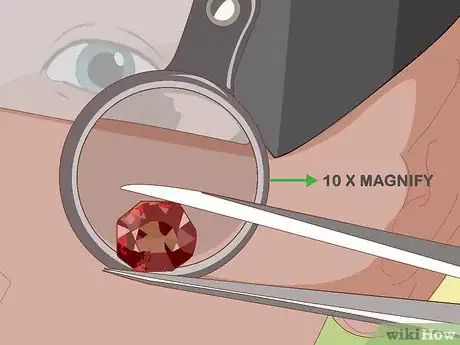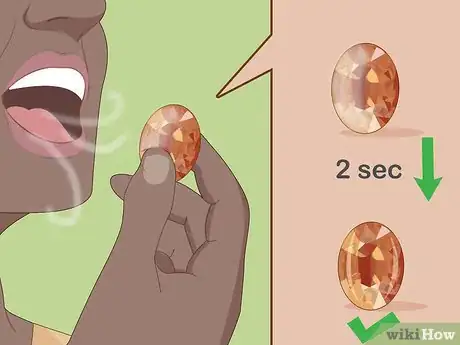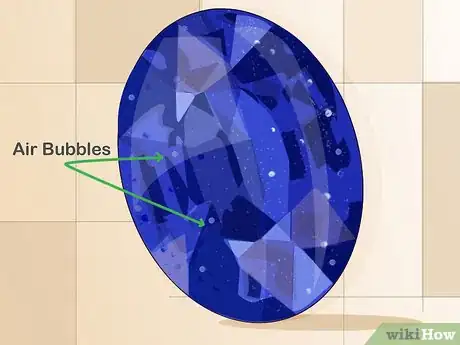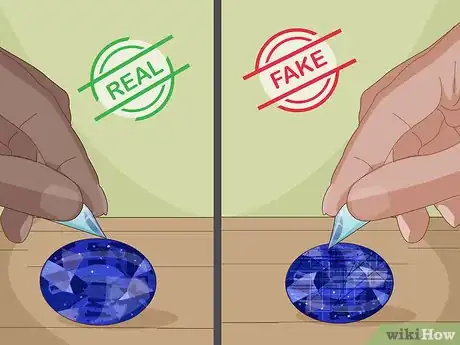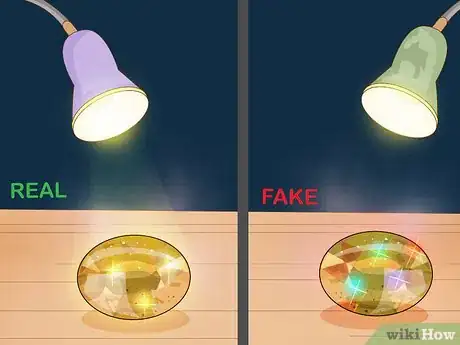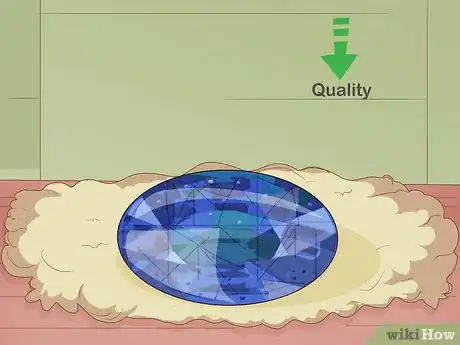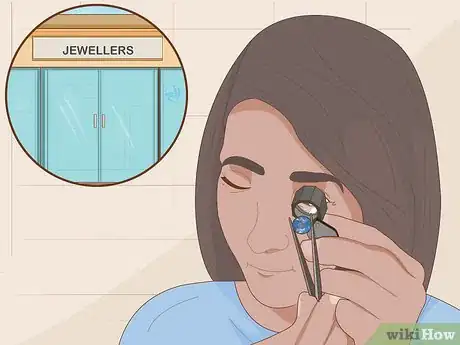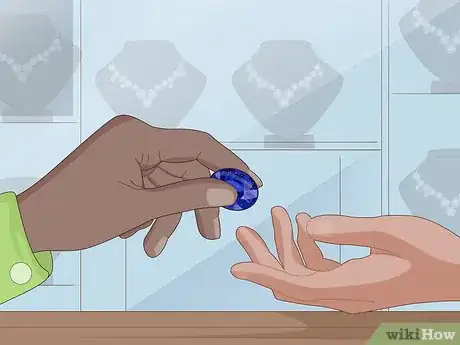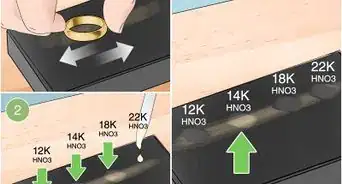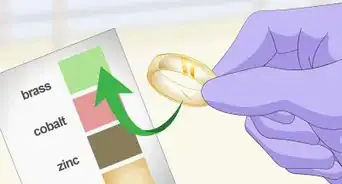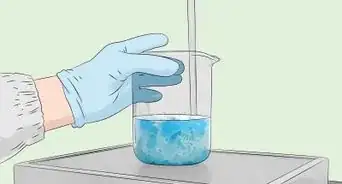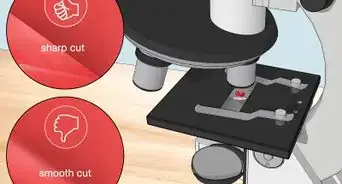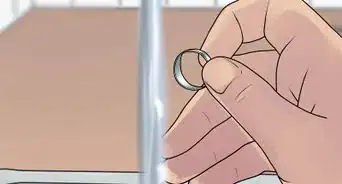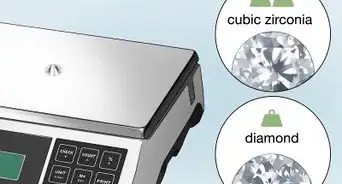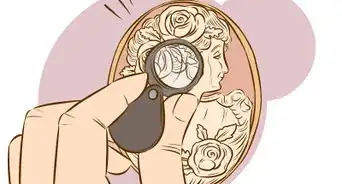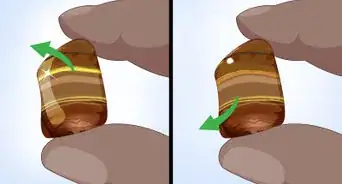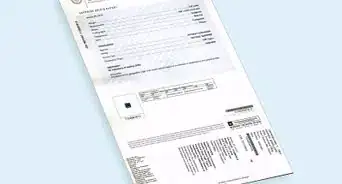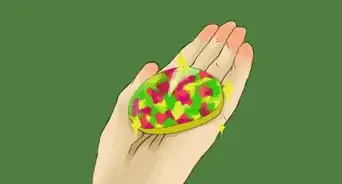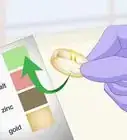This article was co-authored by Kennon Young. Kennon Young is a Master Gemologist Appraiser and the Owner of Vermont Gemological Laboratory in Burlington, Vermont. With over 20 years of experience in the industry, Kennon and his team specialize in handmade engagement rings, wedding bands, and custom jewelry. He attended the Revere Academy of Jewelry Arts, the Gemological Institute of America, and the Rhode Island School of Design Extension. He is a Jewelers of America (JA) Certified Bench Jeweler Technician and received the highest credential in the jewelry appraisal industry, the ASA Master Gemologist Appraiser, in 2016.
There are 7 references cited in this article, which can be found at the bottom of the page.
wikiHow marks an article as reader-approved once it receives enough positive feedback. In this case, 94% of readers who voted found the article helpful, earning it our reader-approved status.
This article has been viewed 449,828 times.
Sapphires are typically thought of as blue but can also be red, yellow, orange, green or other colors in between. Natural sapphires are found in the ground or in the water. Synthetic sapphires are created in a lab. Look for flaws or inclusions in real sapphires, perform a breath test to judge authenticity, and get a sapphire certified. Look for air bubbles, try the scratch test, and shine a light through the gem to spot a fake sapphire. Always ask jewelers about the sapphires they are selling to find out what type of gem it is.
Steps
Comparison Chart
Looking for Signs of a Real Sapphire
-
1Look for flaws and inclusions. Use a jeweler’s magnifying glass, at least 10x magnification, to inspect the sapphire closely. Natural sapphires form with tiny bits of other matter in them, so look for small specks and blemishes. These flaws are a good indication that a sapphire is real.[1]
- Lab-created (fake) sapphires do not have inclusions of this nature, and some natural sapphires don’t have flaws either, but if you find flaws it is real.
-
2Perform the breath test. Take your sapphire and breathe on it to fog it up. Count how long it takes for the fog to start fading and how long until the fog is totally gone. Natural gems should clear up in just one or two seconds, but created sapphires may take closer to five seconds to clear up.[2]Advertisement
-
3Get your sapphire certified. Gemologists can examine a sapphire with refractometers and magnification Polaris scopes to determine what kind of gem it is.[3] They will give you a report on what they decide about the sapphire once they have analyzed it. They can tell you if it is natural or synthetic, treated or not, as well as many other attributes.[4]
- Once the gemologists have fully examined the gem, they will give you an official statement. If you have an old family sapphire that you are sure is natural and valuable, it is good to have it certified to ensure that you get the best value if you sell it.
- A certified sapphire will be easier to sell for a good price.
- Jewelers are not qualified to tell you if a sapphire is real or not.[5]
Spotting a Fake Sapphire
-
1Check the gem for air bubbles. Lab-created sapphires are essentially glass that is put through a process similar to the one that forms natural sapphires. Since they are glass, tiny air bubbles remain in them after they form. If you see any bubbles inside of the sapphire then it is not real.[6]
- Be sure to turn the sapphire over and inspect it from every angle. It’s possible that air bubbles will only be visible from one angle.
-
2Use the scratch test. If you have two sapphires and you know for sure one is real, use it to scratch the second one. Gems of equal hardness can’t scratch each other, so if both are real sapphires then nothing will happen. If the real sapphire leaves a scratch on the second sapphire, then the second one is not real, or is at least of lower quality.[7]
- This test can damage a synthetic sapphire, so be wary of ruining the inferior gem.
-
3Watch how light reflects from the sapphire. Turn the lights off in a room and shine a flashlight on the sapphire. If the sapphire is real, it will only reflect light that is the same color as the sapphire. If it is fake, meaning it is made of glass, it will reflect other colors besides the color of the gem.
Determining a Sapphire’s Quality
-
1Look for intersecting lines in the sapphire. Some natural sapphires are of such poor quality that they can’t be sold. One way that sellers make up for this is filling the sapphire with lead-glass which masks the poor quality of the sapphire. If you see criss-crossing lines, you may have a real sapphire but it is most likely of low quality.
-
2Ask the jeweler if the gem is natural. If you are considering buying a sapphire from a jeweler, you should always ask whether the gem is natural or synthetic. The FTC requires that jeweler’s disclose information about any gems that they sell.[8]
- Don’t be afraid that you will sound critical or uninformed if you ask about a sapphire. It’s your money to spend and you want to know for sure what kind of product you are buying.
-
3Ask the jeweler if a natural sapphire has been treated. There are various treatments that are done to sapphires to enhance their color or clarity. While this may make the sapphire look better, you may feel it reduces the natural quality.[9]
- Treatments are not permanent, so it is good to ask about treatments and how long they will last on the gem. Treatments can be removed to return the gem to its natural look.
References
- ↑ https://bellatory.com/fashion-accessories/How-To-Recognize-Lab-Created-Gemstones
- ↑ http://www.detectafake.com/viewProduct/?269588
- ↑ Kennon Young. Master Gemologist Appraiser. Expert Interview. 13 September 2019.
- ↑ https://www.withclarity.com/education/gemstone-education/sapphire-gemstone/sapphire-grading
- ↑ Kennon Young. Master Gemologist Appraiser. Expert Interview. 13 September 2019.
- ↑ http://www.detectafake.com/viewProduct/?269588
- ↑ https://www.gemsociety.org/article/hardness-and-wearability/
- ↑ https://www.ftc.gov/tips-advice/business-center/guidance/loupe-advertising-diamond-gemstones-pearls
- ↑ http://www.thenaturalsapphirecompany.com/t-treated_vs_untreated_sapphires/
About This Article
To determine if a sapphire is real, hold it up to your mouth and breathe on it so it fogs up. Then, count how long it takes for the fog to fade. If it takes longer than 1-2 seconds, the stone probably isn't a real sapphire. You can also tell if a sapphire is real by shining a light on it. If it reflects any color other than blue when you shine the light on it, the sapphire isn't real. To learn other ways you can tell if a sapphire is real, like checking it for air bubbles, keep reading!

